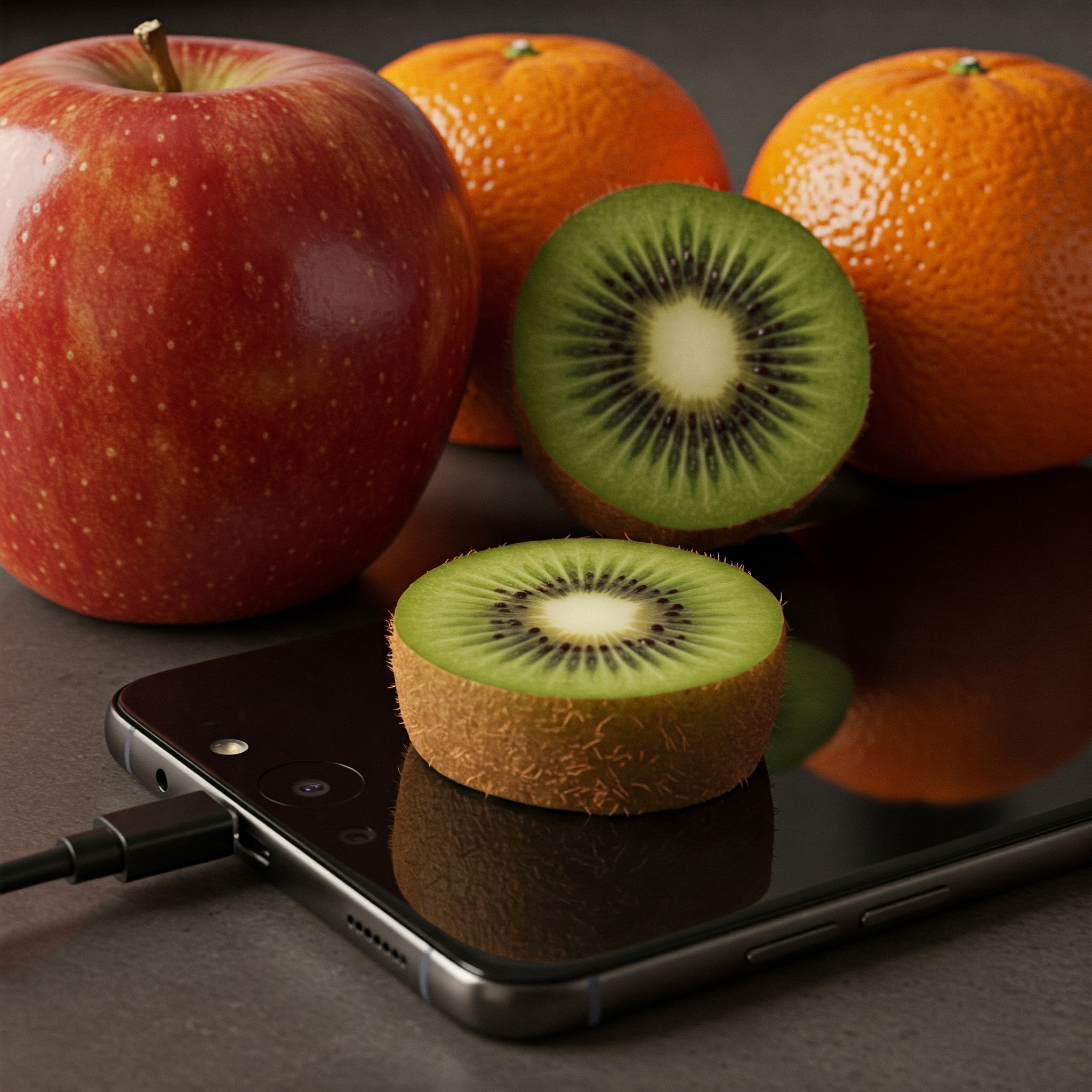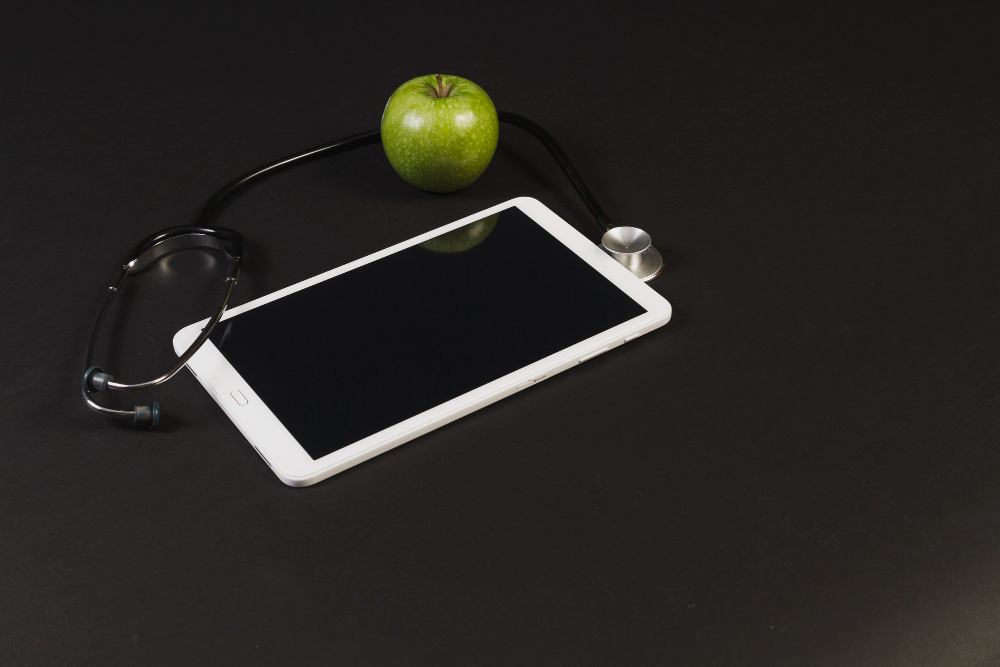Physical Address
60 Ekwema Cres, Layout 460281, Imo
Physical Address
60 Ekwema Cres, Layout 460281, Imo

Charging a phone with fruits sounds like something out of a science experiment, and while it is not a very reliable means of charging your phone for daily use, the science behind this is really quite fascinating.
The idea of being able to charge your phone with fruits has been one that has interested many, majorly in areas like Nigeria where electricity is not very stable.
This is a simplistic idea since some fruits will have chemical reactions that produce very minimal electric outputs. While scientifically the concept has validity, it applies only on very minute scales in terms of whether modern smartphones are charged or not.
In Nigeria, where power supply issues can sometimes make charging phones a challenge, innovative ideas like “charging your phone with fruit” catch attention. This method relies on the chemical properties of certain fruits to create electricity. But how practical is it?
In this writing, we’ll look into the process, explore the science, and answer key questions about how to Charge your Phone with Fruit.

It is theoretically possible to charge your phone with fruits but with a catch-it requires many fruits, very careful setup, and the electricity is extremely low.
The fruits-for example, lemons, oranges, or bananas-produce electricity as a result of the chemical reaction between two different metals inserted into the fruit, say copper and zinc. The acid in the fruit acts as an electrolyte that permits electrons to flow from one metal to another, creating an electric current.
This current is normally too small to charge modern phones without major adjustments. This setup is, however, applied in educational experiments to demonstrate the basic principles of chemistry and electricity.
The generated electricity by one fruit is close to negligible. For instance, the voltage a lemon battery generates is about 0.9 volts, far below the required voltage needed for charging a smartphone.
It would take several batteries of fruit hooked in series to make a voltage large enough to charge a phone. Even in such cases, the current is usually just too low to charge a phone properly.
Also see: Full List of Tecno Phones and Prices in Nigeria |2025
Among different fruits, lemons are commonly used in this kind of experiment due to their high citric acid content, which would help the chemical reaction that should occur in producing electricity.
Other citrus fruits, such as oranges and grapefruits, may also be used, but lemons tend to give a higher voltage. It should be realized that even though these fruits are able to generate electricity, the amount is too small for practical charging of smartphones.
Interestingly, fruit waste has also been used in research for energy storage. One such study from the University of Sydney devised a way to convert durian and jackfruit waste into super-capacitors capable of storing energy efficiently.
What this does not mean is that you can charge your phone directly with these fruits, but it opens up avenues for sustainable energy storage solutions derived from natural materials.
At such circumstances, a cell phone usually wants 5 volts and quite a substantial current-almost 1 amp-so multiple lemons should be connected in series to reach an appropriate voltage value. Estimates give about 30 lemons being connected in series to be able to provide enough voltage to charge up the phone.
But even then, at sufficient voltage, the current this will set up is extremely small, and the charging would take an impossibly long time. In any case, this is more of an interesting experiment rather than a practical method of charging a phone.
Also see: Latest itel Phones in Nigeria 2025
Roll each lemon on a flat surface to loosen the juice inside. This is important to give room for maximum reaction without breaking the skin of the fruit.
Put one zinc nail and one copper wire in each lemon, making sure that the electrodes are far enough apart so as not to touch inside the fruit. The zinc and copper thus act like the anode and cathode, respectively, for facilitating a chemical reaction.
Use alligator clips to connect the zinc nail in one lemon to the copper wire in the next lemon. Continue this for all lemons, making a series circuit. In such a configuration, the voltage is increased according to the sum of the output from each lemon.
Measure the voltage of your circuit in general using a multimeter. This should be at least 5 volts, which is the minimum voltage your smartphone needs for charging.
Connect the last zinc and copper terminals in series, respectively, to the positive and negative terminals of a USB charger. This allows the circuit to transfer the generated electricity to your phone.
Now, hook up your phone to the USB charger and observe what happens. If the circuit is on correctly, your phone could show that it is charging.
The phone might charge, though rather very slowly, or it may not charge at all, depending on how much current comes out; this is a low-current method, inefficient for modern smartphones, but it showcases the basic working of electricity generation.
Citrus fruits
Around 1000 lemons in a series or parallel combination
Potatoes and Lemons
While interesting, the idea of charging your phone with fruit is more about education in understanding the basic principles of electricity than a practical way to charge your smartphone.
The voltage and current provided by fruit batteries are too low to charge modern devices effectively.
However, for reliable and efficient charging, using conventional chargers designed for your smartphone is always desirable.
Nevertheless, these experiments give an outline of the great potential of natural materials in energy generation and storage-a future way of getting innovative and sustainable solutions.
Read about the 15 Latest Samsung Phones and Prices in Nigeria